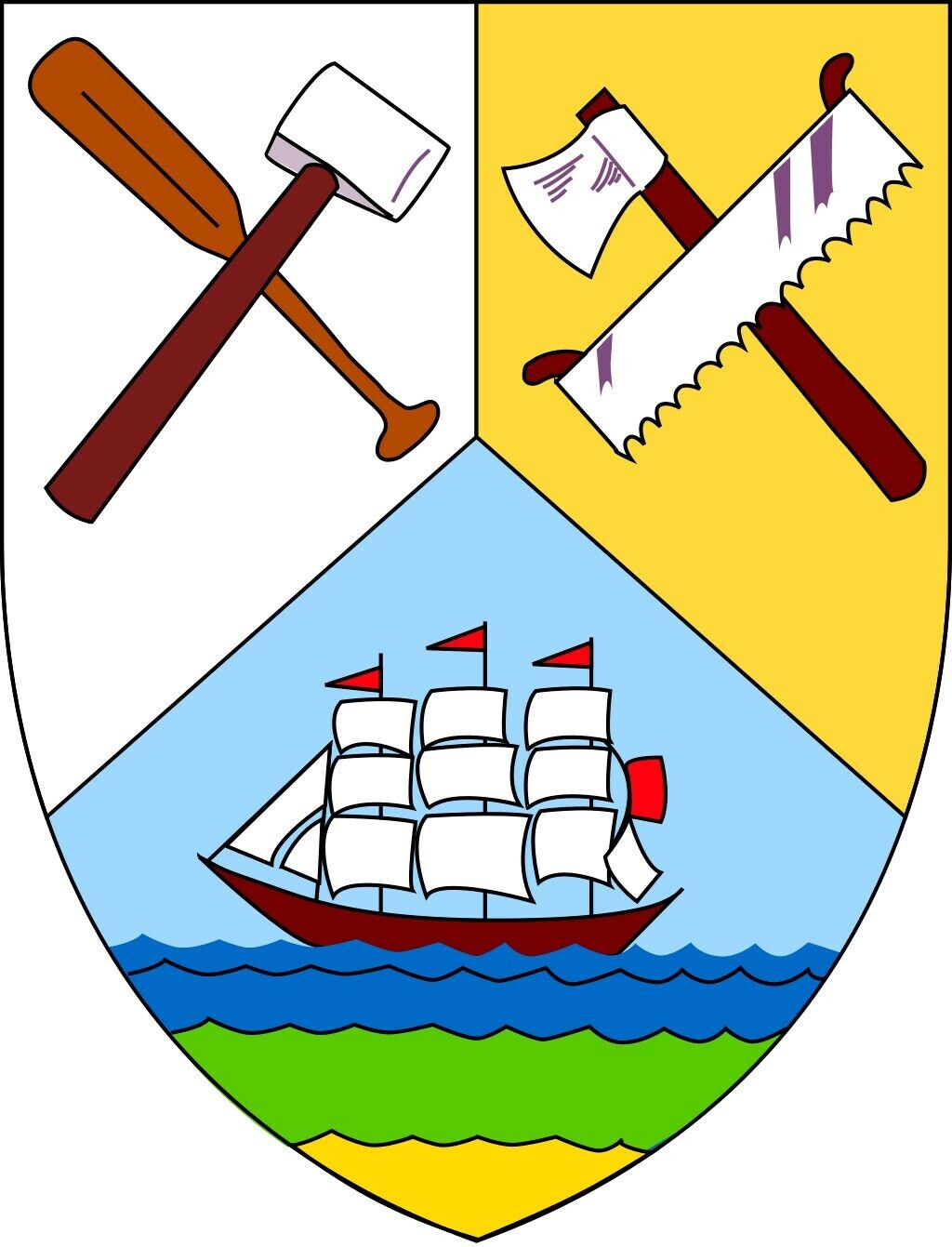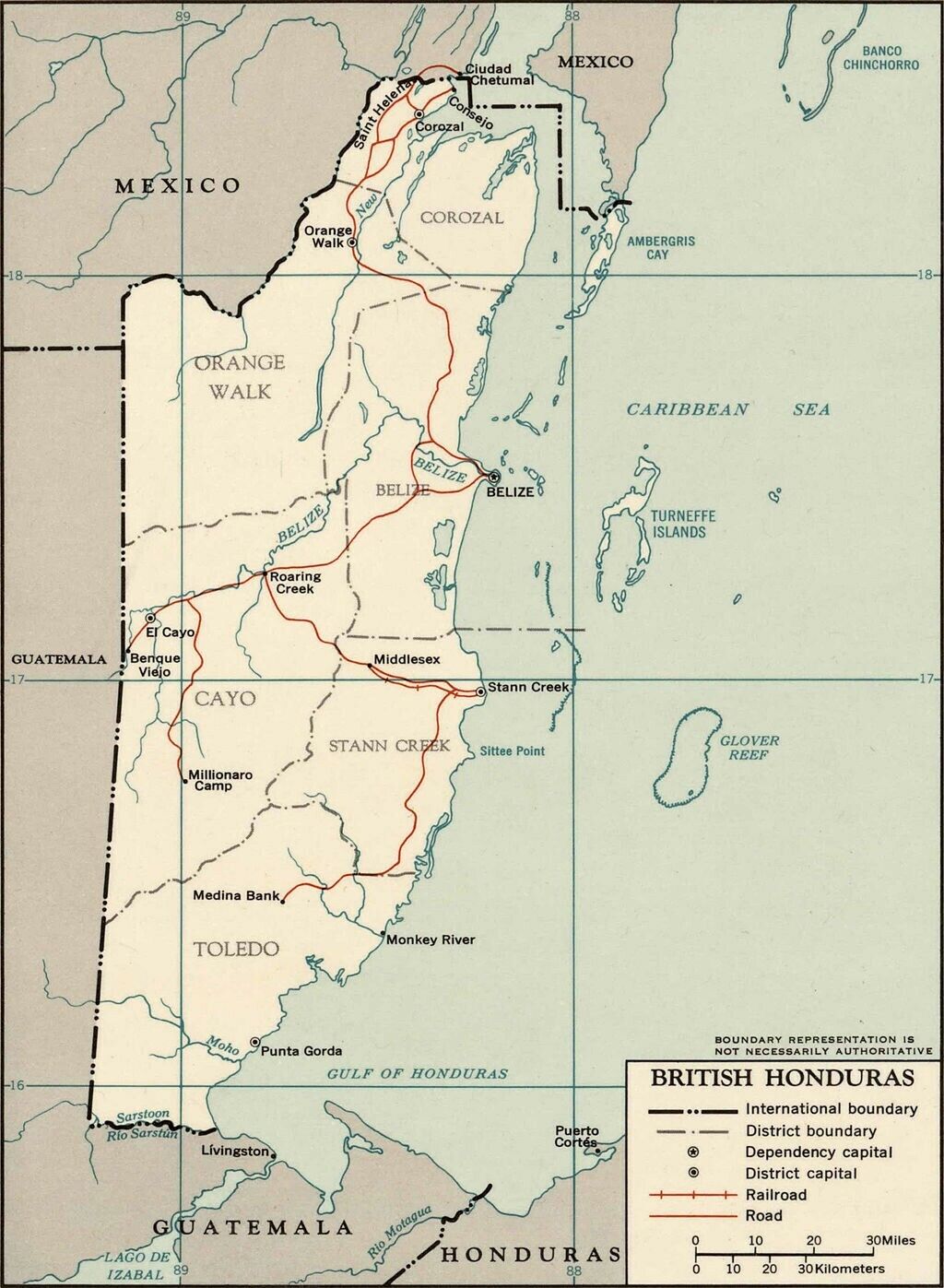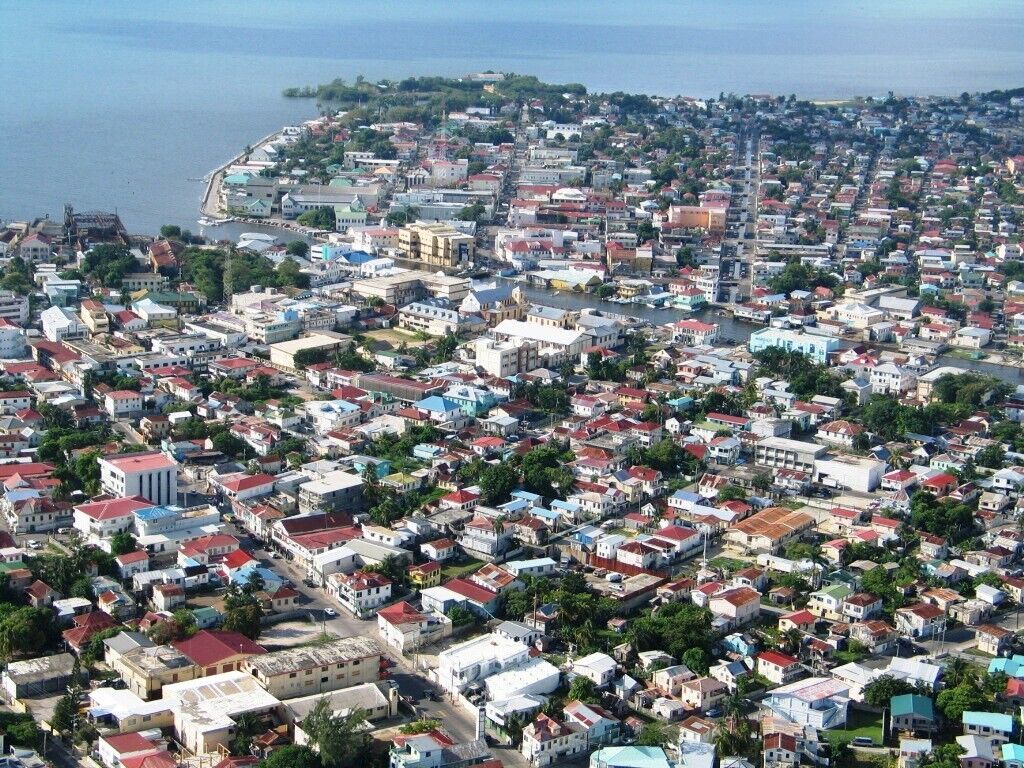-40%
BRITISH HONDURAS OLD POSTCARD WITH ONE CENT STAMP AND LARGE SPECIMEN PRINTED
$ 10.29
- Description
- Size Guide
Description
BRITISH HONDURASBELIZE
OLD SPECIMEN POSTCARD
BRITISH HONDURAS OLD POSTCARD WITH ONE CENT STAMP AND LARGE SPECIMEN PRINTED
Era: George VI (1936 - 1952)
COMMONWEALTH NATION
CENTRAL AMERICA
Same Stamp with Different Stamp Numbering System:
Scott Number:
Stanley Gibbons:
British Honduras
British Honduras
was a British
Crowncolony
on the east coast of Central America, south of Mexico,from 1749 to 1964, then a
self-governing colony
, renamed Belize in June1973,
[3]
untilSeptember 1981, when it gained full independence as
Belize
. BritishHonduras was the last continental possession of the United Kingdom in the
Americas
.
The colony grew out of the
Treaty ofVersailles (1783)
between Britain and Spain, which gavethe British rights to cut logwood between the
Hondo
and
Belize
rivers.The
Convention of London (1786)
expandedthis concession to include the area between the Belize and
Sibun
rivers.
[4]
In1862, the Settlement of Belize in the
Bay ofHonduras
was declared a British colony called British Honduras, andthe Crown's representative was elevated to a
lieutenant governor
, subordinate to the
governor of Jamaica
.
[5]
Maya emigration and conflict
As the British consolidated their settlement and pushed deeperinto the interior in search of
mahogany
inthe late 18th century, they encountered resistance from the
Maya
. In thesecond half of the 19th century, however, a combination of events outside andinside the colony redefined the position of the Maya.
[5]
During the
Caste War
in
Yucatán
, adevastating struggle that halved the population of the area between 1847 and1855, thousands of refugees fled to the British settlement. The LegislativeAssembly had given large landowners in the colony firm titles to their vastestates in 1855 but did not allow the Maya to own land. The Maya could onlyrent land or live on reservations. Nevertheless, most of the refugees weresmall farmers, who by 1857 were growing considerable quantities of sugar, rice,corn, and vegetables in the Northern District (now
Corozal
and
Orange Walk
districts).In 1857, the town of Corozal, then six years old, had 4,500 inhabitants, secondin population only to Belize Town, which had 7,000 inhabitants. Some Maya whohad fled the strife in the north, but had no wish to become British subjects,settled in the remote Yalbac Hills, just beyond the woodcutting frontier in thenorthwest. By 1862, about 1,000 Maya established themselves in 10 villages inthis area, with the center in
San Pedro
. One group of Maya, led byMarcos Canul, attacked a mahogany camp on the Bravo River in 1866, demandingransom for their prisoners and rent for their land. A detachment of Britishtroops sent to San Pedro was defeated by the Maya later that year. Early in1867, more than 300 British troops marched into the Yalbac Hills and destroyedthe Mayan villages, provision stores, and granaries in an attempt to drive themout of the district. The Maya returned, however, and in April 1870, Canul andhis men marched into Corozal and occupied the town.
[5]
Two years later, Canul and 150 men
attackedthe barracks at Orange Walk
. After several hours offighting, Canul's group retired. Canul, mortally wounded, died on 1 September1872. That battle was the last serious attack on the colony.
[5]
In the 1880s and 1890s,
Mopán
and
Kekchí
Mayafled from forced labour in Guatemala and came to British Honduras. They settledin several villages in southern British Honduras, mainly around San Antonioin
ToledoDistrict
. The Maya could use Crown lands set aside as reservations, butthese people
[
clarification needed
]
lackedcommunal rights. Under the policy of
indirect rule
, a system of elected
alcaldes
(mayors),adopted from Spanish local government, linked these Maya to the colonialadministration. However, the remoteness of the area of British Honduras inwhich they settled, combined with their largely subsistence way of life,resulted in the Mopán and Kekchí Maya maintaining more of their traditional wayof life and becoming less assimilated into the colony than the Maya of thenorth. The Mopán and Kekchí Maya maintained their languages and a strong senseof identity. But in the north, the distinction between Maya and Spanish wasincreasingly blurred, and a
Mestizo
cultureemerged. In different ways and to different degrees, then, the Maya whoreturned to British Honduras in the 19th century became incorporated into thecolony as poor and dispossessed ethnic minorities.
By the end of the 19th century, the ethnic pattern that remainedlargely intact throughout the 20th century was in place: Protestants largely ofAfrican descent, who spoke either English or Creole, lived in Belize Town; theRoman Catholic Maya and Mestizos spoke Spanish and lived chiefly in the northand west; and the Roman Catholic Garifuna who spoke English, Spanish, orGarifuna and settled on the southern coast.
[5]
Formal establishment of the colony, 1862–1871
The forestry industry's control of land and its influence incolonial decision making hindered the development of agriculture and thediversification of the economy. In many parts of the Caribbean, large numbersof former slaves, some of whom had engaged in the cultivation and marketing offood crops, became landowners. British Honduras had vast areas of sparselypopulated, unused land. Nevertheless, land ownership was controlled by a smallEuropean monopoly, thwarting the evolution of a Creole landowning class fromthe former slaves. Rather than the former slaves, it was the
Garifuna
, Mayaand Mestizos who pioneered agriculture in 19th-century British Honduras. Thesegroups either rented land or lived as squatters. However, the domination of theland by forestry interests continued to stifle agriculture and kept much of thepopulation dependent on imported foods.
[5]
Landownership became even more consolidated during the economicdepression of the mid-19th century. Exports of mahogany peaked at over 4million linear metres in 1846 but fell to about 1.6 million linear meters in1859 and 8,000 linear meters in 1870, the lowest level since the beginning ofthe century. Mahogany and logwood continued to account for over 80 percent ofthe total value of exports, but the price of these goods was so low that theeconomy was in a state of prolonged depression after the 1850s. Major resultsof this depression included the decline of the old settler class, theincreasing consolidation of capital and the intensification of Britishlandownership. The British Honduras Company emerged as the predominant landownerof the Crown colony. The firm originated in a partnership between one of theold settler families and a London merchant and was registered in 1859 asa
limitedcompany
. The firm expanded, often at the expense of others who wereforced to sell their land.
Largely as a result of the costly military expeditions againstthe Maya, the expenses of administering the new colony of British Hondurasincreased, and that at a time of severe depression in the economy. Largelandowners and merchants dominated the Legislative Assembly, which controlledthe colony's revenues and expenditures. Some of the landowners also hadinvolvement in commerce, but their interest differed from those of the othermerchants of Belize Town. The former group resisted the taxation of land andfavoured an increase in import duties; the latter preferred the opposite.Moreover, the merchants in the town felt relatively secure from Mayan attacksand reluctant to contribute toward the protection of mahogany camps, whereasthe landowners felt that they should not be required to pay taxes on landsgiven inadequate protection. These conflicting interests produced a stalematein the Legislative Assembly, which failed to authorise the raising ofsufficient revenue. Unable to agree among themselves, the members of theLegislative Assembly surrendered their political privileges and asked for theestablishment of direct British rule in return for the greater security of
Crowncolony
status. The new constitution was inaugurated in April 1871and the Legislative Council became the new legislature.
[5]
Colonial order, 1871–1931
Under the new constitution of 1871, the Lieutenant Governor andthe Legislative Council, consisting of five ex-officio or "official"and four appointed or "unofficial" members, governed British Honduras.This constitutional change confirmed and completed a change in the locus andform of power in the colony's political economy that had evolved during thepreceding half-century. The change moved power from the old settler oligarchyto the boardrooms of British companies and to the Colonial Office in London.
[5]
In 1875, the British Honduras Company became the Belize Estateand Produce Company, a London-based business that owned about half of all theprivately held land in the colony. The new company was the chief force inBritish Honduras's political economy for over a century.
[5]
This concentration and centralisation of capital meant that thedirection of the colony's economy was henceforth determined largely in London.It also signalled the eclipse of the old settler elite. By about 1890, mostcommerce in British Honduras was in the hands of a clique of Scottish andGerman merchants, most of them newcomers. This clique encouraged consumption ofimported goods and thus furthered British Honduras's dependence on Britain. TheEuropean minority exercised great influence in the colony's politics, partlybecause it was guaranteed representation on the wholly appointed LegislativeCouncil. The manager of the Belize Estate and Produce Company, for example, wasautomatically a member of the council, while members of the emerging Creoleelite were excluded from holding seats on the council. The Creoles requested in1890 that some seats on the council be opened to election (as had occurred inCanada and New Zealand) in the hope of winning seats, but the LegislativeCouncil refused. In 1892, the Governor appointed several Creole members, butwhites remained the majority. In 1919 demobilised Creole servicemen protestedBritish racism, but British troops soon stopped this spontaneous protest, whichwas indicative of discontent but had little lasting effect. In the 1920s, theColonial Office supported agitation for an elective council as long as theGovernor had reserve powers to allow him to push through any measures heconsidered essential without the council's assent. But the council rejectedthese provisos, and the issue of restoring elections was postponed.
[5]
Despite the prevailing stagnation of the colony's economy andsociety during most of the century prior to the 1930s, seeds of change werebeing sown. The mahogany trade remained depressed, and efforts to developplantation agriculture in several crops, including sugarcane, coffee, cocoa,cotton, bananas and coconuts failed. In 1894 mahogany workers rioted against acut in their real wages caused by devaluation, but British troops soon stoppedthis spontaneous protest. A brief revival in the forestry industry took placeearly in the 20th century as new demands for forest products came from theUnited States. Exports of
chicle
, a gumtaken from the
sapodilla
treeand used to make chewing gum, propped up the economy from the 1880s. Much of thegum was tapped in Mexican and Guatemalan forests by Mayan chicleros who hadbeen recruited by labour contractors in British Honduras. A short-lived boom inthe mahogany trade occurred around 1900 in response to growing demand for thewood in the United States, but the ruthless exploitation of the forests withoutany conservation or reforestation depleted resources. The introduction oftractors and bulldozers opened up new areas in the west and south in the 1920s,but this development led again to only a temporary revival. At this time,mahogany, cedar and chicle together accounted for 97 percent of forestproduction and 82 percent of the total value of exports. The economy, which wasincreasingly oriented toward trade with the United States, remained dependentand underdeveloped.
[5]
Creoles, who were well-connected with businesses in the UnitedStates, challenged the traditional political-economic connection with Britainas trade with the United States intensified. Men such as Robert S. Turton, theCreole chicle buyer for
Wrigley's
, and HenryI. Melhado, whose merchant family dealt in illicit liquor during
prohibition
, becamemajor political and economic figures. In 1927, Creole merchants andprofessionals replaced the representatives of British landowners, (except forthe manager of the Belize Estate and Produce Company) on the LegislativeCouncil. The participation of this Creole elite in the political process wasevidence of emerging social changes that were largely concealed by economicstagnation. These changes accelerated with such force in the 1930s that theyushered in a new era of modern politics.
[5]
Government
Before 1884 the colonial administration of British Honduras wasrather haphazard. In the early days, the colonists governed themselves under apublic meeting system, similar to the
town meeting
system used in
NewEngland
. A set of regulations called "
Burnaby'sCode
" was adopted in 1765, which continued in force until 1840,when an executive council was created. Also in 1840, the colony formally becameknown as British Honduras, although it was also referred to as "theBelize". In 1853 the public meeting system was abandoned in favour of a legislativeassembly, part of which was elected by a restricted franchise. The assembly waspresided over by the British superintendent, an office created in 1784.
From 1749 until 1884, British Honduras was governed as a
dependency
of the British colony ofJamaica. Upon its designation as a Crown colony in 1871, a Lieutenant Governorunder the Governor of Jamaica replaced the superintendent, and a nominatedlegislative council replaced the legislative assembly. When the colony wasfinally severed from the administration of Jamaica in 1884, it gained its ownGovernor.
In 1935 legislative franchise was reintroduced with a lowerincome qualification. Universal adult franchise was adopted in 1954, and amajority of seats in the legislature were made elective. A ministerial systemwas introduced in 1961, and the colony achieved self-government status in 1964.
Economy
Forestry dominated the economy of British Honduras. Initially,the focus was upon
logwood
, whichwas used in dye manufacture. Falling prices for logwood in the 1770s led to ashift toward logging mahogany, which would dominate the economy until themid-20th century. As the logging of mahogany was far more labour-intensive,this also led to a significant increase of the importation of African
slaves
tothe colony, mainly from Britain's Caribbean colonies. Due largely to extremelyharsh working conditions, the colony experienced four slave revolts, the firstin 1765 and the last in 1820. Slavery was finally abolished in 1838. Exports ofmahogany continued as an economic mainstay, as commercial agriculture remainedunprofitable due to unfavourable colonial tax policies and trade restrictions.Colonial officials provided incentives during the 1860s that resulted in alarge influx of Americans from the Southern United States, especially
Louisiana
, duringand after the American Civil War. The
Confederate settlements inBritish Honduras
introduced large-scale sugar productionto the colony and proved that it could be profitable where others hadpreviously failed.
The lack of diversification in the economy left the colony verysusceptible to swings in the mahogany market. The Great Depression of the 1930sand an especially destructive
hurricane
in1931, further depressed the economy and already low living conditions. From1914 on, the forestry industry was in steady decline, except for a briefrevival during
World WarII
(1939–1945). In the 1950s agriculture finally became adominant part of economy, and in the 1970s fishing became significant.
Landreform
after World War II aided this expansion of the economy.
Demographics
By the time of the colony's 1790 census, three-quarters of thepopulation of British Honduras were a mixed-race people known as "Creolepeople". They were the ancestors of the original Belizean-Creolepopulation, who were, and still are, the biological offspring of European menand enslaved African women. The Europeans who sired the originalBelizean-Creole people consisted mainly of British, Portuguese, Spanish andFrench men.
The
abolition of the slave trade
in1807, high death rates and low birth rates substantially reduced the ethnicAfrican portion of the population. The white portion of the population remainedconsistently at around 10%. The largest portion of the population became theMestizo people, now about 50% of modern Belize. The Mayans are still present inBelize and comprise around 11% of the population.
The population of the colony was always fairly small. In 1790 itwas around 4,000. In 1856 it was estimated to be 20,000. By 1931 this figuregrew to just over 50,000, and in 1946 to just under 60,000. However, by 1970the population doubled to just under 120,000. On the eve of independence in1980, the population stood at over 145,000.
Old Collection
Postage Stamps
International Shipping will cost more.
Item sold for more than needs to have tracking.
2021 USPS Postage Rates and Prices
REGISTERED MAIL FEE is .30
INTERNATIONAL POSTAGE is .24 (2 oz)
INTERNATIONAL POSTAGE is .28 (3 oz)
TOTAL POSTAGE and FEES equal .58
Please check cost with seller before buying.
Thank you!
Combined Shipping for Multiple Purchases.
Shipped with United States Postal Service (USPS) First Class Mail.




















